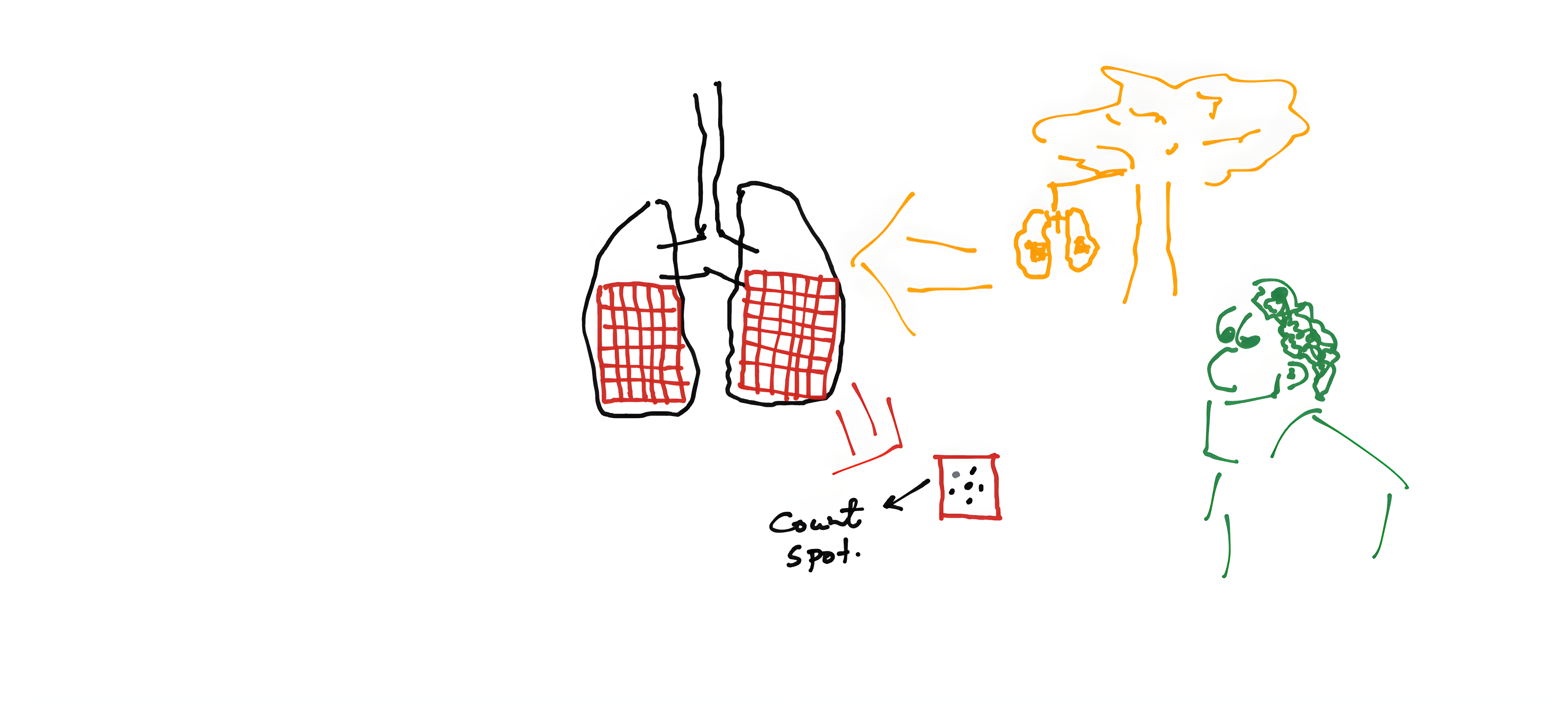Designed for – Class III-IV
Time – 3 days
Objectives
Air pollution is one of the threats in both urban and rural areas in India. Not only outdoor but indoor environments are highly polluted with particulate matter. Here, the experiments will guide the students to visualize air pollution in different sources.
Prerequisites
Before the beginning of the experiment, briefly describe the types of air pollutants especially particulate matter. Different types of air pollution sources and how air pollution can infiltrate our lungs can also be discussed.
Tools required
One pitch board shaped like a human lung, white paper, vaseline, a pencil, and small ropes
 Methods
Methods
Cut a pitch board according to the shape of the human lung (one foot long). Paste the white paper over the patchboard. Draw a 6✖ 6-cell cube with a 1-inch arm length. Apply a generous amount of vaseline over the white paper to form a uniform layer. Make a hole at the top of the pitch board and hang it in different places with rope. The students can take the board and hang it near the road, inside the bedroom, kitchen or near an industrial unit. The students need to write down the places they are hanging the pollution catcher. Keep it for three days.
Now, after three days, count the black/brown dots in the 36 cubes and compare the number of dots for different environments. Write down which environment is more polluted and which environment is clean.
Expected results
Vaseline works as a glue that traps the particulate matter in the air. The area with more polluted air should have more particulates.
Pro-tips
Use a magnifying glass while counting the particles. Keep the pollution catcher near a vehicular exhaust and coal/wood cooking stove and see the changes in minutes.
